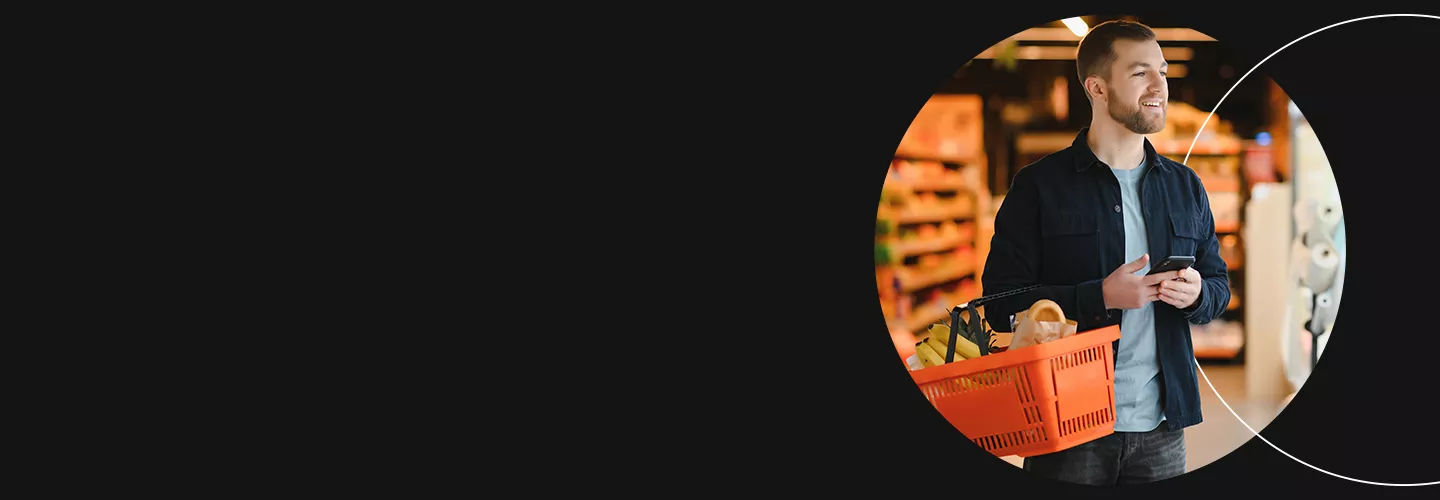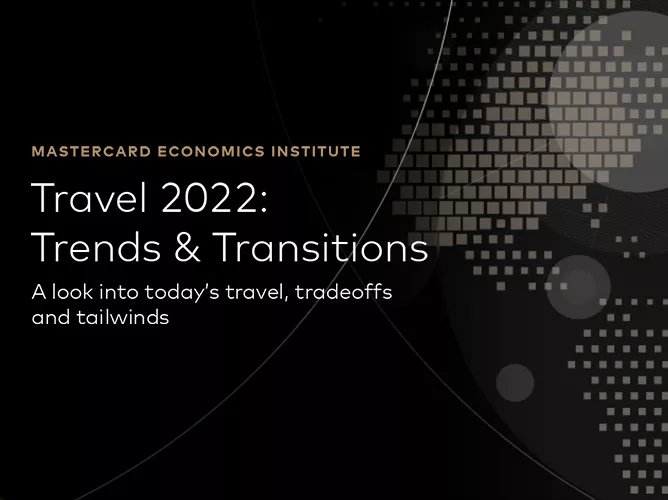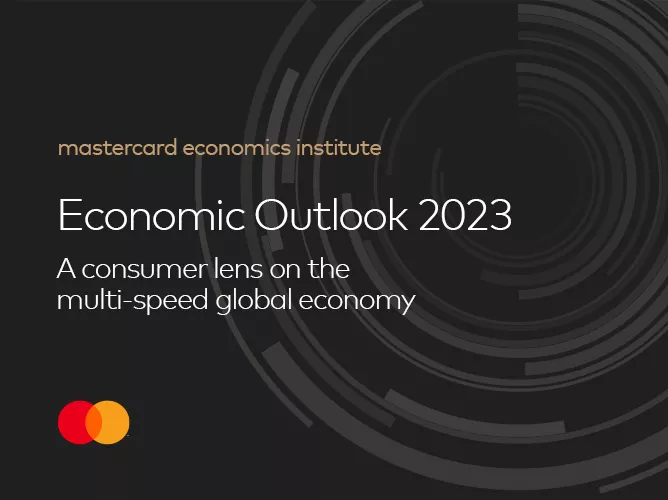April 24, 2023 | By Emma Goodyear
Stay loyal to premium brands or trade down? Shop online or visit the store? Buy local or stock up at a superstore?
Consumer needs and preferences continue to evolve at a pace that is hard to keep up with, let alone get ahead of. Economic factors such as geopolitical uncertainty, high inflation and rising interest rates, and general financial worries continue to disrupt and influence consumer spending decisions.
These changes in the global economy have a way of revealing new trends in how consumers react to them, forcing many industries that sell to consumers to reexamine and transform their strategies. The consumer goods industry is no different. While we expect more shifts, there are a few distinct areas where we see increased focus:
- Predicting rapidly changing consumer needs: Greater focus on understanding economic triggers and their impact on consumer spending and price elasticity.
- New ways to connect with consumers: Meeting consumers where they shop and addressing their preferences as they evolve.
- Driving supply chain transformation: Striving for a more digitized and sustainable supply chain.
Before diving into what we see in the industry, it’s crucial to understand how the economy and consumer choices are changing globally.
Macroeconomics
Consumer goods companies (also known as consumer packaged goods companies) were not immune to the inflation shock of 2022, but there were vast differences by product category, based on analysis from the Mastercard Economics Institute. For example, inflation spiked for household paper products, leading to a decline in spending. Less spending on household paper products may mean consumers are trading down to less expensive brands. In contrast, spending on cosmetics has been strong as people prioritized looking good when economies started re-opening.
High grocery inflation has also been a key driver of shifts in consumer preferences. In most European countries, consumers are shopping in person at grocery stores more frequently and spending less per visit.
However, high food inflation in Eastern European countries has driven up grocery spend despite consumers trading down in countries like Hungary, where spending on groceries was up 12.1% in January 2023 compared to January 2022 and up 11.2% in the Czech Republic, according to Mastercard SpendingPulse™, which measures in-store and online retail sales across all forms of payment.
The trend in Asia Pacific is more varied. In September 2022, consumers in Australia had increased their grocery shopping trips by 6.7% compared to September 2019 and spent 9.4% more per visit, according to the Economic Outlook 2023 report. But in Indonesia, consumers increased their shopping trips by 35% but spent 3.1% less per visit. In Singapore, grocery sales were down -21.1% in January 2023 compared to January 20221.
The impact of inflation may be felt differently worldwide based on factors like fiscal policies and income levels2.
The lower the country is on the income ladder, the higher the impact.
Understanding and adapting to changing consumer needs and navigating the complex implications of the macroeconomic environment are crucial to success this year and beyond.
What other ways is the consumer goods industry changing in 2023?
Predicting rapidly evolving consumer needs
Continued economic uncertainty in 2023 brings a greater need to understand economic triggers and their impact on consumer spending and price elasticity. How do global consumer goods companies make reliable demand predictions knowing any event or combination of circumstances could dramatically change things?
Generally, consumer goods demand forecasting is sophisticated, often leveraging AI and machine learning.
No one has a crystal ball, so forecasting models capable of scenario planning and tracking to guardrails are key.
Incorporating macroeconomic trends into these models is complex but necessary.
Consider a seemingly simple scenario: What if inflation rises by 1%? Of course, any good forecasting model can look at prior times of increasing inflation to see how consumers reacted and build that into the forecast. But how does a 1% inflation increase impact consumer spending trends following a pandemic and stockpiling, followed by supply chain challenges and major consumer preference changes?
While historical data is still crucial to predicting the future, we may never have previously seen this exact combination of events. Predicting the outcome therefore becomes far more complex.
Predictive models should have the capacity to ingest macroeconomic data and triggers, along with controlling for special events and the consequential behavioral changes, working toward producing a baseline forecast backed up by a range of scenarios (both positive and negative) to assess the breadth of potential outcomes. This type of scenario forecasting helps frame things like:
- What is the potential impact on supply chains?
- How quickly might stockouts occur?
- How might different sub-sets of consumers respond?
- How is consumers’ price sensitivity changing across categories?
Only then can a solid contingency plan be developed to mitigate potential risks. Of course, there is also an upside of a rapidly changing market, providing that companies can quickly spot changing consumer needs and react quickly. Even in tough economic times, companies should continue to seek fresh opportunities and innovate with speed.
New ways to connect with consumers
Proximity to the consumer is an ongoing challenge for consumer goods companies. Direct-to-consumer brands and channels once seemed to be the answer, but the reality today is the scalable distribution play is through established retailers.
However, connecting with the consumer does not necessarily mean having a direct connection. Instead, connections and, ultimately brand loyalty, can be formed by meeting consumers where they are shopping and addressing their evolving preferences.
Meet the consumer where they want to shop
One channel that will continue to gain traction for consumer goods companies is retail media networks. These are retailer-owned platforms that enable in-store advertising via the digital channel, such as the retailer’s online store.
As Google prepares to eliminate third-party cookies from Chrome in 2024 and more regulations on consumer privacy are introduced, retail media networks have been a viable way for consumer goods brands to get in front of captive consumers.
Many large retailers across the globe are capitalizing on this opportunity, including grocery giants like Walmart, Walgreens-Boots, Schwartz and Woolworths. Advertising on retail media networks could reach 20% of U.S. digital ad spend in 2023, according to Gartner. Total global retail media spending could hit $160 billion by 2027, which represents a 60% growth rate over five years.
Addressing evolving consumer preferences
As if predicting rapidly evolving consumer needs wasn’t hard enough, capitalizing on insights gleamed is even more challenging. Consumer goods companies must generate and activate these insights quickly to make data-driven decisions.
Consider the role of analytics in the new product development cycle. Before product design, companies need to understand consumer needs and market conditions. Post-product launch, companies must quickly understand how the product performs and its impact on other product lines.
For example, a global consumer goods company based in the U.S. wanted to better understand consumer spending patterns across various industries and channels. So it used Mastercard’s SpendingPulse™ Next Generation platform to access market intelligence based on consumer buying behavior. The platform provided the company more insight into upcoming market trends and understand key drivers for fluctuations in consumer spending.
In another instance, a consumer goods company based in North America replaced a value product with a new mid-tier product. The company wanted to use a scientific approach to understand the sales impact of the new product launch, including potential cannibalization effects. The company used Mastercard Test & Learn® to test the product introduction in a subset of markets and evaluated the product’s performance. By targeting the distribution of the new product to a select set of stores using Test & Learn®’s predictive model, the company drove $15.3 million in incremental sales.
Adapting to emerging consumer trends quickly and using business experimentation to optimize consumer engagement is critical for staying relevant.
Driving supply chain transformation
Supply chain disruption has been felt worldwide in the last couple of years, impacting most consumers in some way. This led consumer goods companies to reexamine and transform supply chains. Mastercard is working with companies in two key areas:
Sourcing – Driving supply chain sustainability and resilience
Food and fast-moving consumer goods produce more than one-third of global emissions. Today’s consumers are increasingly aware of what their favorite brands represent, and, led by Gen Z, demand for increased sustainability measures is growing. Regulations also play a key role in net-zero emissions, as well as reusable or recyclable packaging by 2030 with the European Union’s Green Deal.
No wonder consumer goods companies are more focused than ever on building sustainability into their supply chains. However, identifying weaknesses and opportunities for improvement is a critical component and can be quite challenging.
Mastercard is working with consumer goods companies to overcome these challenges with the recent launch of Global Treasury Intelligence. This is a collaborative platform that extracts data from a company’s Enterprise Resource Planning (ERP) system (or often multiple ERP systems) and cleanses and normalizes these complex data sets into a single platform capable of identifying risks and commercial opportunities. This gives companies a 360-degree view of their suppliers, their diversity and environmental, social and governance (ESG) ratings and implications across the supply chain.
The platform also generates insights on how and when companies pay suppliers, which is significant for smaller suppliers as many are working capital constrained. Paying these smaller suppliers faster can mean more opportunities to diversify supply chain partners and support small businesses.
Distribution – Digitizing the ecosystem for small retailers
Small and medium-sized enterprises (SMEs) and mid-sized companies create close to 70% of jobs and GDP worldwide but more than half struggle to thrive. According to research from the World Economic Forum and the National University of Singapore Business School, 67% of executives from SMEs cite survival and expansion as their primary challenge.
Small businesses like grocery stores and restaurants and bars play a vital role in the consumer goods value chain due to their proximity to end consumers. But they need access to the short-term working capital critical to survival and growth. As a result, in tough economic times, these small businesses tend to be the first to collapse.
Consumer goods companies also suffer in cash-heavy economies, leading to fraud, security challenges and operational inefficiency. So providing a digital and financial ecosystem for SMEs represents an opportunity for consumer goods companies to boost sell-in and make the distribution network more efficient while increasing the resilience, opportunities and loyalty of their retailers. And this is precisely the ambition of many of our consumer goods partners, particularly in emerging markets.
Mastercard is working with consumer goods companies to develop digital programs for small businesses to help them access formal credit, use digital payments for paying and receiving, and embed B2B loyalty to get rewarded along the way. One example is Mastercard’s Microcredit program, which combines distribution data from Unilever and analysis by Mastercard to provide micro-credit eligibility recommendations to KCB Bank in Kenya. The bank then uses this information to assess a retailer’s creditworthiness and extend formal credit for stock purchases – interest-free for up to 17 days.
This program is helping create financial resilience to help combat the effects of tough economic conditions and help small businesses thrive.
Conclusion
As the global economy and consumer preferences evolve, consumer goods companies must focus on making data-driven decisions using economic and consumer insights, finding new channels and approaches for engaging consumers and driving supply chain transformation. Mastercard works with global consumer goods companies to focus on these evolving priorities. To learn more, reach out to your Mastercard representative or contact us.
2 Economic Outlook 2023, Mastercard Economics Institute, December 2022
3 “E-commerce & retail media forecast,” GroupM, WPP’s Media Investment Group, September 2022.
4 4 ways the food and consumer goods industries can decarbonize their supply chains,” World Economic Forum, November 11, 2022.
5 “Future readiness of SMEs and mid-sized companies: A year on,” World Economic Forum, December 2022.











